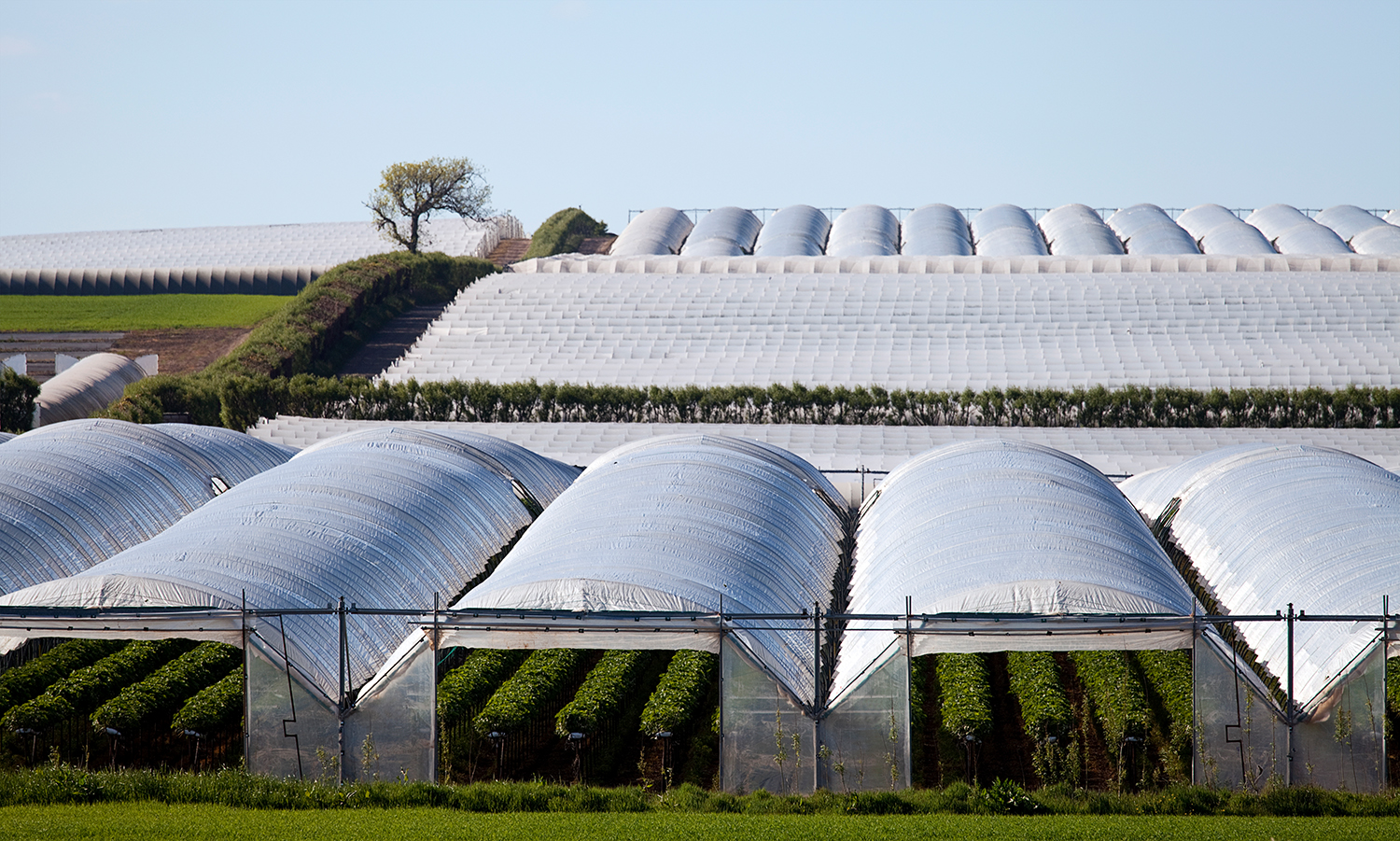Polytunnels

Polytunnels can cover large expanses of land and their white, reflective plastic can mar landscape views. We look at the potential damaging impacts of these large-scale developments in the Herefordshire countryside.
There are already several large polytunnel developments in Herefordshire. These structures can be intrusive and may have an accumulative and detrimental impact on landscape. Section 3 of the Herefordshire Council Polytunnels Planning Guide 2018 illustrates well many of the issues that may arise.
Polytunnels planning guidelines
When deciding whether to submit a representation on a planning application to install polytunnels for intensive growing of soft fruit, think first about their scale and location. The large scale developments usually have linked tunnels (‘Spanish polytunnels’) and most are permanent in that the soft fruit is grown in suspended structures with fixed irrigation and feeding installations; the result is that the polytunnels will be visible for years to come. Where cherries are grown intensively, the polytunnels are taller and the plants are in the ground but irrigation piping is installed.
With all the polytunnel types, excess run-off is a potential problem.
Have a close look at the documents accompanying the application. Check for the following:
- Whether the polythene covers will be removed for a fixed period during the winter.
- If an environmental impact assessment (EIA) was required; is the report on the website?
- Whether scoping for this was required; is the report on the website?
- If a habitats regulation assessment was needed; is the report on the website?
Other questions that are planning considerations are:
- The proximity to a protected landscape like an Area of Outstanding Natural Beauty (AONB) or a nature reserve
- The distance from a water course (very important)
- Views from a public right of way or public road
- Views to and from any historic or graded buildings and archaeological sites
- The potential effects on nearby residences/residents’ amenity
Look for all the associated developments, that is, the seasonal workers’ accommodation, ‘pods’, toilet blocks, recreational facilities, the proposed irrigation, drainage and sewage disposal works and the road access.
When writing or emailing the planning officer always quote the relevant planning policies. These are:
- National Planning Policy Framework (NPPF) 2019 Policy 15 ‘Conserving and Enhancing the Natural Environment’ paras. 170 to 177
- Herefordshire Local Plan – Core Strategy (CS) 2011 – 2031 Policies SS6, RA3 LD1, LD3, SD3 and MT1, published 2015
- AONB management plans, if relevant
- Herefordshire Council Polytunnels Planning Guide (June 2018) and its predecessor document, published in 2008
If help is needed, we have a small advisory planning team.
Try to get a response to an application in before the end of the public consultation date, although representations can be made to the planning officer right up to the decision date.



